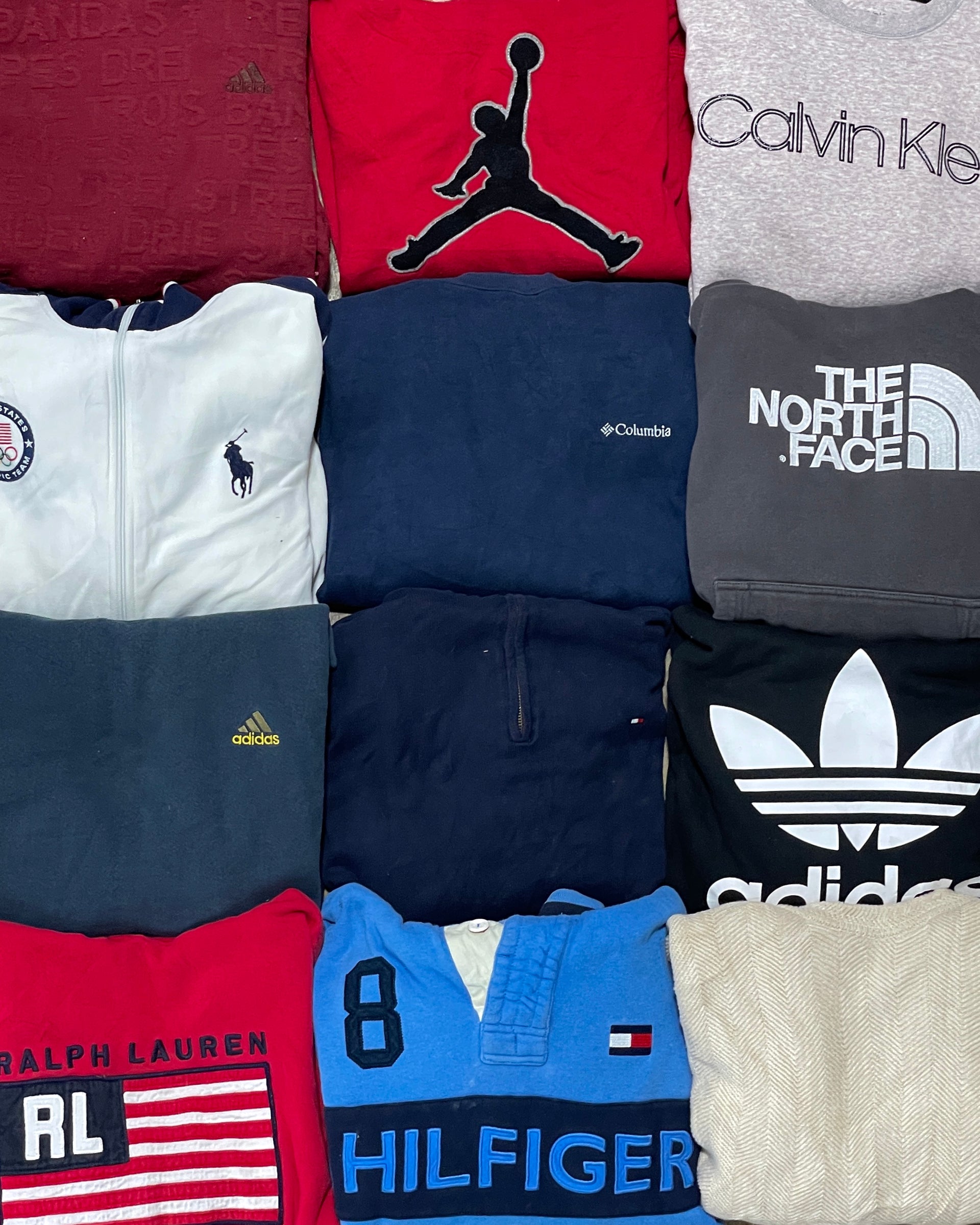Understanding Fabric Weaves and Textures in Branded Clothing
Understanding Apparel: The Relevance of Material Choices in Your Closet
The choice of fabric in clothing plays an essential duty in both appearances and capability. Different materials offer varying degrees of comfort, longevity, and breathability, directly influencing the user's experience. Comprehending these nuances can boost one's closet substantially. Lots of forget how these options can impact not just personal design, yet also sustainability. What material choices could redefine your wardrobe and align it with both design and responsibility?
The Role of Material in Fashion and Performance

Common Fabric Kinds and Their Characteristics
When picking clothes, understanding the features of typical material kinds is necessary for making informed choices. Cotton, a widely-used all-natural fiber, is known for its breathability, flexibility, and softness, making it appropriate for informal wear and daily garments. Bed linen, another all-natural option, flaunts superb moisture-wicking homes and a distinct structure, perfect for cozy climates.Wool, typically preferred for its heat and longevity, varies in fineness; merino woollen is soft versus the skin, while coarser types are made use of for outerwear. Artificial textiles like polyester and nylon supply longevity and resistance to creases, making them prominent for activewear and travel garments. Lastly, blends, which combine artificial and all-natural fibers, can enhance performance while preserving comfort. By recognizing these material attributes, individuals can choose apparel that lines up with their lifestyle and aesthetic preferences.
Breathability and Comfort: Picking the Right Fabrics for Various Climates
Selecting the right fabrics for various climates can greatly boost comfort and total wearability. Breathable materials are necessary in warm climates, as they allow air blood circulation and wetness dissipation. Fabrics such as cotton, bed linen, and moisture-wicking synthetics efficiently attract sweat away from the body, maintaining the user cool and dry. Alternatively, in chillier climates, thicker textiles like wool or fleece provide insulation while keeping breathability, making sure warmth without overheating.Additionally, the selection of material weight plays a vital function; light-weight materials are more suitable for summer, whereas larger alternatives are suited for wintertime wear. Comprehending the one-of-a-kind homes of each textile makes it possible for individuals to dress appropriately for differing weather condition conditions. Eventually, selecting comfy and breathable textiles customized to specific environments can significantly boost everyday convenience and improve the total experience of wearing clothes.
Longevity and Treatment: Exactly How Textile Affects Long Life of Your Closet
Choosing the right products can significantly influence the toughness and care demands of a wardrobe. Fabrics such as cotton and polyester are understood for their resilience and convenience of maintenance, making them suitable for daily wear. On the other hand, fragile materials like silk and shoelace require even more mindful handling and specialized cleaning methods, which can boost the time and effort needed for care. Branded Clothing.Durability is likewise influenced by the textile's weave and coating; securely woven textiles often tend to withstand damage far better than freely woven options. Additionally, artificial blends often provide improved longevity, integrating the ideal qualities of numerous fibers.Understanding the care directions for every material is vital, as incorrect washing or drying out can cause early wear. Ultimately, selecting durable materials can lead to a longer-lasting closet, lowering the frequency of substitutes and adding to a more sustainable fashion selection
The Effect of Textile on Fit and Silhouette

Sustainable Textile Choices: Making Eco-Friendly Choices
The impact of material expands beyond fit and silhouette to incorporate environmental variables, motivating a growing interest in sustainable textile choices. Environmentally friendly fabrics, such as organic cotton, hemp, and Tencel, are obtaining traction amongst customers that prioritize sustainability in their closets. These materials are frequently created with less chemicals and water, reducing their ecological footprint.Additionally, recycled textiles, made from post-consumer waste, provide an innovative remedy to the fabric industry's pollution trouble. Brands significantly embrace openness in their sourcing methods, permitting consumers to make educated choices about their purchases.Choosing lasting fabrics not just supports ethical practices yet also motivates the fashion business their website to embrace even more liable manufacturing approaches. As understanding of environmental concerns rises, individuals are prompted to review the lasting impact of their textile options, cultivating a movement towards a much more ecologically aware and lasting strategy to style.
Elevating Design: Exactly How Fabric Can Change a Clothing
While several might focus on color and cut when selecting an outfit, the selection of textile plays an essential duty in boosting design and boosting overall appearance. Different products communicate distinctive moods and messages; as an example, silk exhibits deluxe and refinement, while jeans offers a casual, relaxed vibe. The texture and drape of a material can drastically alter the silhouette, with organized materials offering a sleek appearance and softer ones producing an extra fluid, unwinded aesthetic.Moreover, the weight of the material influences wearability throughout periods. Lightweight materials like bed linen and cotton are optimal for summer season, while much heavier products such as wool and velour offer heat and style in cooler months. Recognizing textile properties, such as breathability and stretch, additionally empowers individuals to make informed options that enhance convenience without compromising design. Inevitably, the best textile can change an attire from common to remarkable, making it an important factor to consider in any wardrobe.
Frequently Asked Questions
Just how Do I Recognize the Fabric Material of My Garments?
To determine material web content, one can examine treatment tags, conduct shed tests for fiber recognition, or seek advice from material examples. These methods assist separate materials, guaranteeing educated choices for apparel care and upkeep in day-to-day wear.
Can Material Choice Affect My Mood or Confidence?
Material choice can greatly impact an individual's mood and self-confidence. Branded Clothing. Certain products might stimulate feelings of convenience or elegance, while others can feel uncomplimentary or limiting, inevitably influencing self-perception and psychological health throughout the day
What Fabrics Are Best for Delicate Skin?
For people with sensitive skin, natural fabrics like bed linen, cotton, and bamboo are frequently recommended. These materials are breathable, hypoallergenic, and less most likely to cause inflammation, making them suitable choices for comfort and skin health.
Exactly how Do I Properly Laundry and Look After Different Fabrics?
To properly care and additional info clean for various fabrics, one must think about each material's particular demands, consisting of temperature settings, cleaning agents, and drying out methods, making sure longevity and keeping the material's initial high qualities for ideal usage.
Are There Specific Fabrics for Athletic or Efficiency Use?
Athletic or efficiency wear often utilizes fabrics such as polyester, spandex, and nylon. These products are made for moisture-wicking, breathability, and adaptability, improving activity and comfort throughout exercises while offering longevity and assistance. Conversely, in chillier climates, thicker materials like wool or fleece give insulation while keeping breathability, ensuring warmth without overheating.Additionally, the selection of material weight plays an important duty; lightweight textiles are more effective for summer season, whereas heavier alternatives are fit for winter wear. In contrast, delicate products like silk and shoelace need even more mindful handling and specialized cleaning techniques, which can raise the time and effort required for care.Durability is also influenced by the material's weave and surface; snugly woven materials have a tendency to withstand wear and tear better than freely woven alternatives. In comparison, inflexible fabrics can restrict motion however provide a timeless, sleek look.Moreover, the density and texture of the textile can affect the visual click over here now assumption of body form. The impact of fabric prolongs past fit and silhouette to incorporate ecological aspects, motivating an expanding rate of interest in sustainable textile selections. The texture and drape of a textile can significantly change the silhouette, with organized fabrics offering a refined appearance and softer ones creating an extra fluid, kicked back aesthetic.Moreover, the weight of the textile influences wearability throughout seasons.